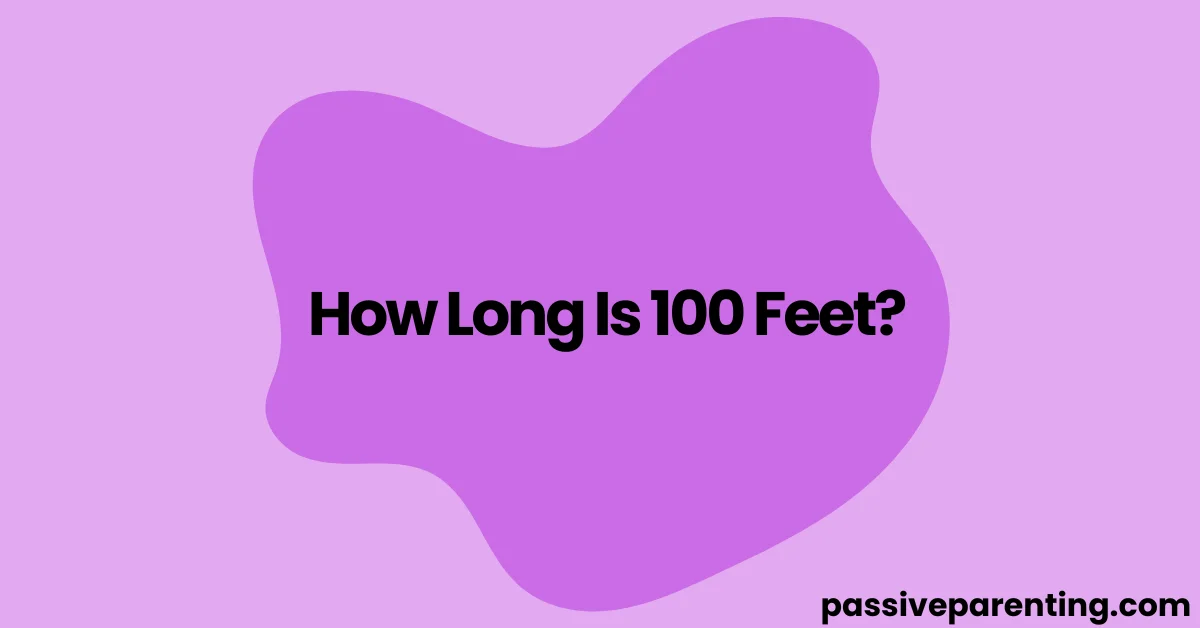When someone asks how long is 100 feet, the raw number means little without comparison. Is it longer than a school bus? Taller than a building? To bring it to life, let’s convert it and then match it to 10 real-world examples. You’ll get a vivid sense of what 100 feet looks like and how to judge distances confidently.
One hundred feet equals 30.48 meters (since 1 ft = 0.3048 m) according to standard length conversion tables. That’s just over 30 meters, a distance you could walk in 10 seconds at a quick pace. Below, you’ll see how that stacks up against things you might recognize.
10 Things That Are About 100 Feet Long
Here are 10 everyday or natural items close to 100 feet long:
- Blue whale
- Boeing 737 airplane
- Basketball court
- Ten-story building
- Large cruise ship gangway
- City bus convoy of three buses
- Olympic swimming pool
- Railroad boxcar string (about four cars)
- Suspension bridge span section
- Giant sequoia tree
Let’s look at each one in detail.
1. Blue Whale

Blue whales are the largest animals to ever exist. Some individuals approach 100 feet in length (around 30.5 meters) in certain records.
Imagine a single sea creature stretching nearly the full 100-foot span; it dwarfs almost any land animal in everyday life.
2. Boeing 737 Airplane

A Boeing 737’s fuselage (depending on variant) is often in the ballpark of 100 feet long. This means the plane you see at a regional airport gives a real sense of that distance on the ground.
Walking alongside a 737, nose to tail, is a helpful mental image: its body nearly fills up that 100 ft line.
3. Basketball Court

An NBA basketball court (length of play area) is 94 feet; the total including out-of-bounds areas gets near 100 feet. Thus, 100 feet slightly exceeds the playable court, a full court plus a bit more.
So visualize the length of a full court, then extend it by a small margin that gives you the feel of 100 ft.
4. Ten-Story Building

A typical residential or commercial floor is roughly 10 feet tall (ceiling plus structure). Ten stories stack to about 100 feet.
If you stand at the base and look up, you’ll see 10 floors worth of height, that’s the vertical version of 100 ft.
5.Large Cruise Ship Gangway

The ramp or gangway from dock to ship deck on large vessels can approach 100 feet in length, especially for mega cruise ships.
Walking that distance up a sloping ramp gives a practical, slanted sense of the horizontal 100-foot stretch.
6. City Bus Convoy of Three Buses

A standard city bus is about 35–40 feet long. Put three in a row (bumper to bumper), and you’ll approach 100–120 feet.
That visual of three buses end-to-end is close to the 100 ft measure slightly over, but a useful mental benchmark.
7. Olympic Swimming Pool

An Olympic pool is 164 feet (50 m) for the long side, so 100 feet covers about 61% of that length.
If you imagine two-thirds of the pool length, that’s about 100 feet so it spans a major portion of such pools.
8. Railroad Boxcar String (About Four Cars)

A typical freight boxcar is 50–60 feet long. Four of them in a string would span 200–240 feet, so two cars give about 100–120 feet.
Thus, lining up two boxcars gives roughly the 100-foot span; three or four go well beyond.
9. Suspension Bridge Span Section

Bridge engineers often break long spans into segments. A 100-foot section might be one segment between towers or cable anchor points.
When walking or driving, one segment between support pillars may measure around 100 feet.
10. Giant Sequoia Tree

Some giant sequoias reach heights over 250 feet, but many are around 100 feet in height.
Standing beside a mature sequoia around 100 feet tall gives you a vertical version of that same span; look up and imagine it laid flat.
Why Visual Comparisons Help
Numbers alone are abstract. When you see that a blue whale, a small airplane, or part of a building all approximate 100 feet, your brain creates a map. That map helps you estimate distances outdoors, on fields, sidewalks, or in design. Whether you’re gauging a ladder length, mapping a property line, or just daydreaming, knowing how long is 100 feet becomes useful, not just theoretical.
Converting 100 Feet into Other Units
Another way to grasp the size of 100 feet is to convert it into different measurements. One hundred feet equals 30.48 meters or roughly 33⅓ yards. In inches, that’s 1,200 inches, and in miles it’s about 0.019 miles. These conversions make it easy to compare 100 feet with metric-based plans, sports field markings, or road maps.
Everyday Ways to Measure 100 Feet Yourself
You don’t need special tools to measure this distance. For example, the average adult step is about 2.5 feet, so about 40 steps equals 100 feet. A 25-foot tape measure stretched out and moved four times will also give you a precise 100-foot line. These practical tricks help when you’re setting up a garden plot, checking driveway length, or laying out a sports field.




